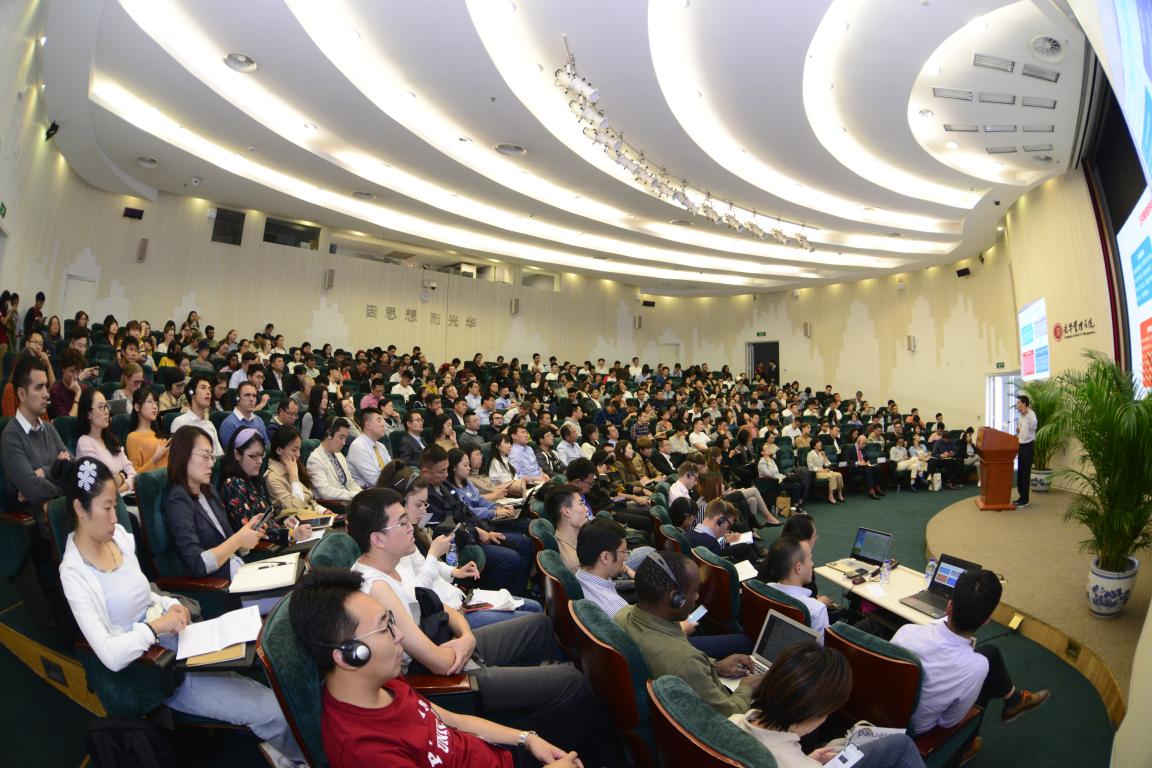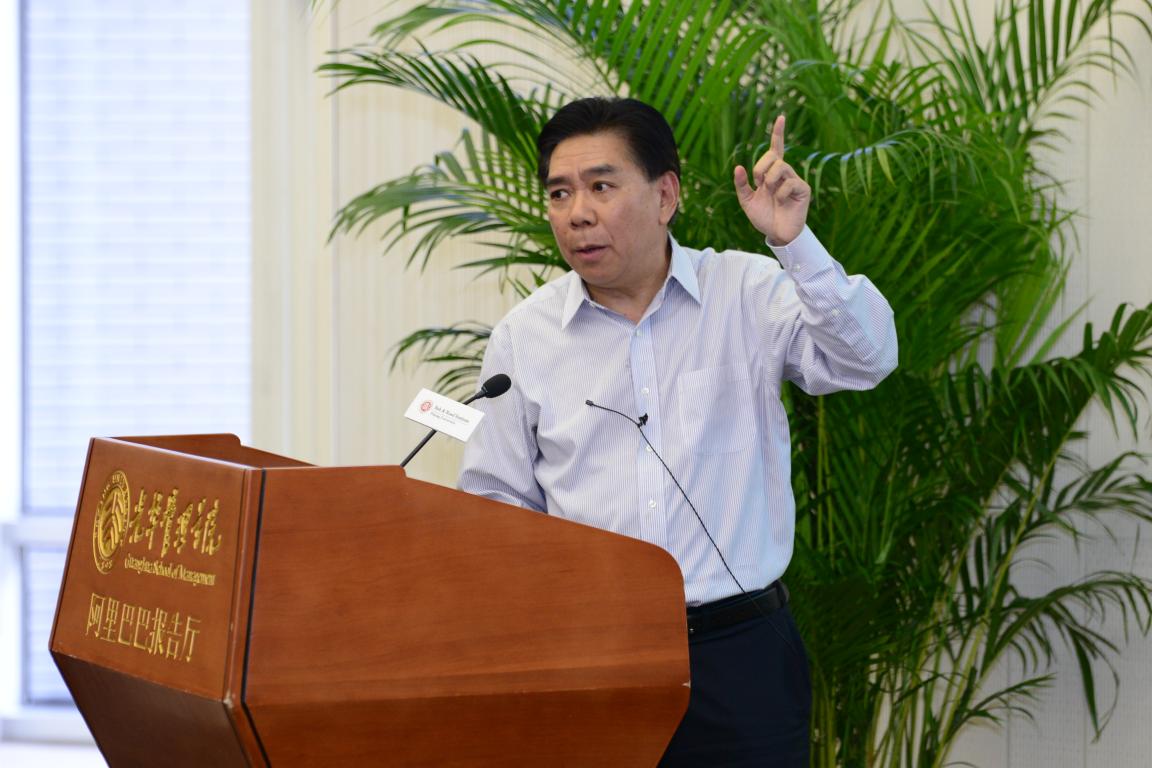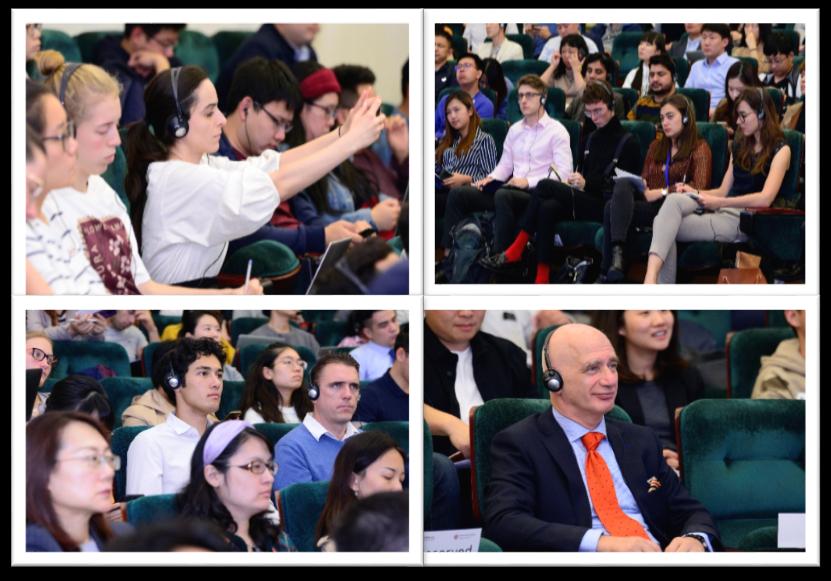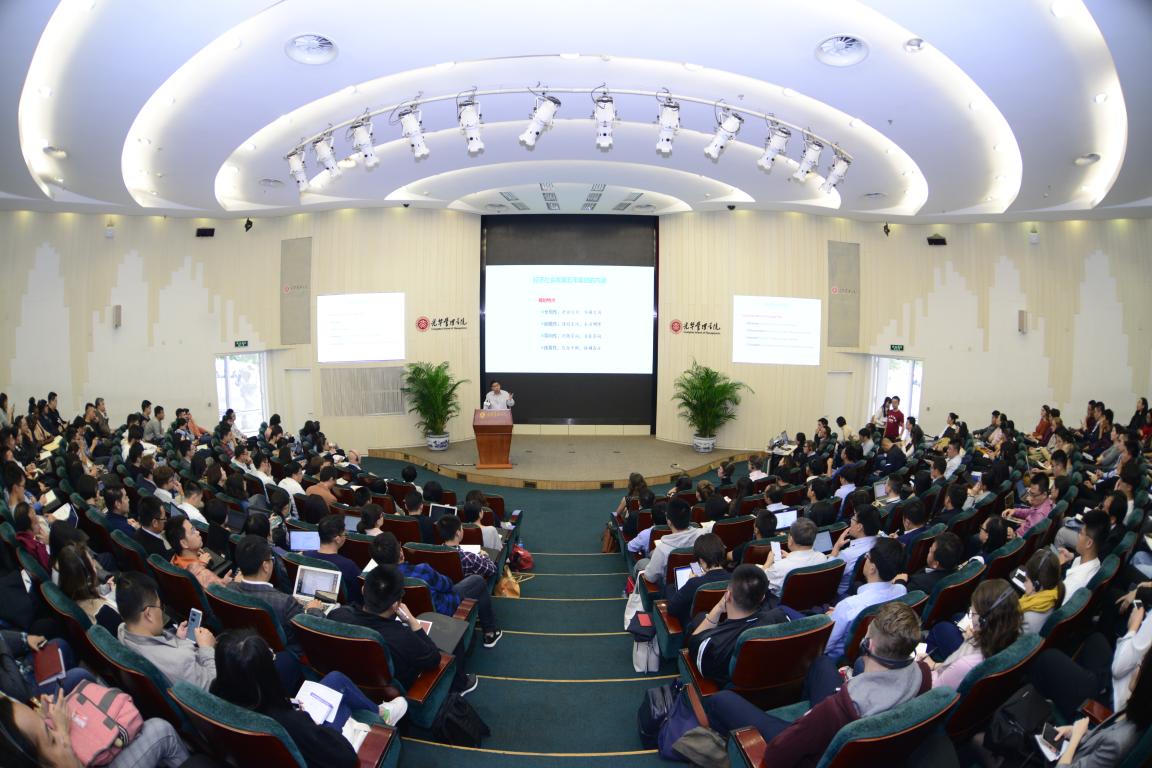On October 11th, the Peking University Belt & Road Institute invited Mr. Xu Xianping, Counsellor to the State Council and Guanghua Professor of Management Practice, to deliver a lecture entitled “An Insider’s Account: Formulation and Implementation of China’s Five-Year Plans”. The lecture was part of the Institute’s “Understanding China” Lecture Series and attracted enthusiastic participation from 300 students, scholars, business leaders, and government representatives from 30 countries and regions, including representatives from the American Chamber of Commerce, the British Chamber of Commerce, the French Chamber of Commerce, and the European Chamber of Commerce.

During his tenure as Deputy Director of the National Development and Reform Commission, Mr. Xu played a key role in drafting China’s 12th and 13th Five-Year Plans, focusing on national development planning, new urbanization planning, transportation system planning, income distribution system planning, and growth and development of innovation. Based on his rich first-hand experience that was supported by data and specific examples, Mr. Xu outlined the purpose of the Five-Year Plans and provided an overview of their formulation, their implementation, and the strategic thinking and main goals for China’s future development.

The Purpose and Formulation of Five-Year Plans
Five-Year Plans serve as the highest-level blueprint of China’s national economic and social development and form an important basis for the government to perform its duties. During his six years of work at the National Development and Reform Commission, Professor Xu came to realize how the proposals made by NPC deputies and CPPCC members related to people’s well-being are implemented through a continuous process of collecting opinions, discussing issues at meetings, and conducting field research. Presenting specific data, he also explained how the government has brought about change and promoted China's economic and social development by solving people’s problems and concerns.
Professor Xu shared the major value orientations that play a decisive role in the country and the Party’s strategies, policies and actions. These value orientations include 1) adhering to people-focused principles 2) focusing on development is the primary aim as the Party steers the government achieve rejuvenation of the country, 3) maintaining the fundamental direction of common prosperity, 4) deepening reforms at home, 5) opening to the outside world in an all-round way, 6) effectively utilizing the roles of both the market and government, 7) developing science and technology as the primary productive force, 8) promoting harmonious co-existence between humans and nature, and 9) maintaining the industrious and hard-working spirit of Chinese people.
A daunting and complicated task, the process of formulating the Five-Year Plan is divided into four main steps. The first step involves conducting preliminary research. This process is organized by the National Development and Reform Commission and requires multi-million-word reports to be written by relevant departments and research institutions. Based on the research conducted during step one, the National Development and Reform Commission formulates its basic ideas on the path of socio-economic development over the period covered by the next Five-Year Plan, proposes a guiding ideology, basic principles, goals and tasks, and policy and measures. In the third step, a team assembled by the central government provides feedback and suggestions. For example, the drafting team responsible for the 13th Five Year Plan was led by the General Secretary Xi Jinping and consisted of the heads of more than 50 party and government departments. Using the basic ideas proposed by the National Development and Reform Commission and the research reports provided by relevant departments and institutions, major policies are formulated with recommendations by Party members and eight domestic parties taken into full consideration. Several members of the central government drafting team are appointed to tour around the country and explain the essence of the central government’s intention with the plan. Lastly, the plan is created. A team organized by the State Council formally proposes the main objectives, specific indicators, major projects and policies in over a period of about half a year. The Premier serves as the leader of the drafting team and more than 10 State Council departments take part. After consulting experts, scholars, NPC deputies, CPPCC members and soliciting opinions from the rest of society through the Internet, the team submits the plan to the National People's Congress for approval.

The Results Achieved and Challenges Faced by the Five-Year Plan
Professor Xu shared that from the First Five-Year Plan to the Thirteenth Five-Year Plan, all established targets were not only achieved, but surpassed. He also described how Five-Year Plans address the strategic goals, strategic environment, and strategic tasks that factor into China’s development planning by using the First Five-Year Plan, the Sixth Five-Year Plan, the Ninth Five-Year Plan and the Twelfth Five-Year Plan as examples.
As a result of the Five-Year Plan system. China’s economy has seen steady growth from RMB367.8 billion in 1978 to RMB90.3 trillion in 2018, with an average annual increase of 9.4% over 40 years, and China’s share of global GDP has increased from 3.8% to 16%. There has been marked improvement in people’s lives, and the annual income of rural and urban residents has increased significantly. The Engel coefficient has dropped from 67.7%, which represents poverty, to less than 30% today, and the proportion of the impoverished population has fallen from 88% to less than 1.2%, with 740 million people lifted out of poverty. China’s contribution to world economic growth is the same as the United States, Japan and the European Union combined. Nevertheless, as Xu emphasized, many challenges remain, including an aging population, a sub-optimal industrial structure, excessive resource and environmental costs, insufficient technological innovation capabilities, and increased economic risks. These challenges can only be resolved by acknowledging the existence of these challenges and executing careful analysis.
Insights and Goals for the New Era
According to Xi Jinping Thought on Socialism with Chinese Characteristics for a New Era, there are three main goals for China to work toward. The first is to build a moderately well-off society in an all-round way by 2020, increase per capita GDP to over USD$10,000, and build a great modern socialist country that is prosperous, strong, democratic, culturally-advanced, harmonious, and beautiful by 2049. The second is to embrace five major development concepts: innovation, coordination, sustainability, openness and sharing. Xu underlined the significance of innovation, saying that innovation must remain the driving force of change as it represents the biggest shortcoming in China’s development. He also advocated for elevating innovation to the same level of importance as “reform” and “opening up” during the Fourteenth Five-Year Plan period in order to create a comprehensively innovative society. The third is to promote high-quality development and finish the six key tasks associated with the construction of a modern economic system, including deepening supply-side structural reforms, speeding up the construction of an innovative country, implementing the rural revitalization strategy, implementing the regional coordinated development strategy, accelerating the improvement of the socialist market economy system and promoting the formation of a new pattern of comprehensive openness.
Xu added that China’s economy is going through some turbulence given the complicated macro-environment, but the country should have the confidence that “history is just like a river moving mightily forward”, and as it moves forward, China will inevitably be able to cross the “Three Gorges” of history as it continues its transition.

After the lecture, Xu addressed questions from the audience concerning the forecasting methods used in formulating the Five-Year Plans, sources of new economic growth, the anticipated trajectory of future reforms, the future of China-US relations, attracting foreign investment, and plans for the Xiong'an New Area.
Peking University Belt & Road Institute Lecture Series: "Understanding China"

Peking University Belt & Road Institute has organized a series of lectures entitled "Understanding China" for local and international scholars alike, aiming at providing a platform for high-level analysis and critique from leading Chinese academics, industry professionals and commentators on what lies ahead for businesses as the global environment changes and boundaries shift.
The lecture series was officially launched in October 2018 with its eight events attracting more than 1000 students, diplomats, business executives, and organizational representatives from over 40 countries.
 Programs
Programs